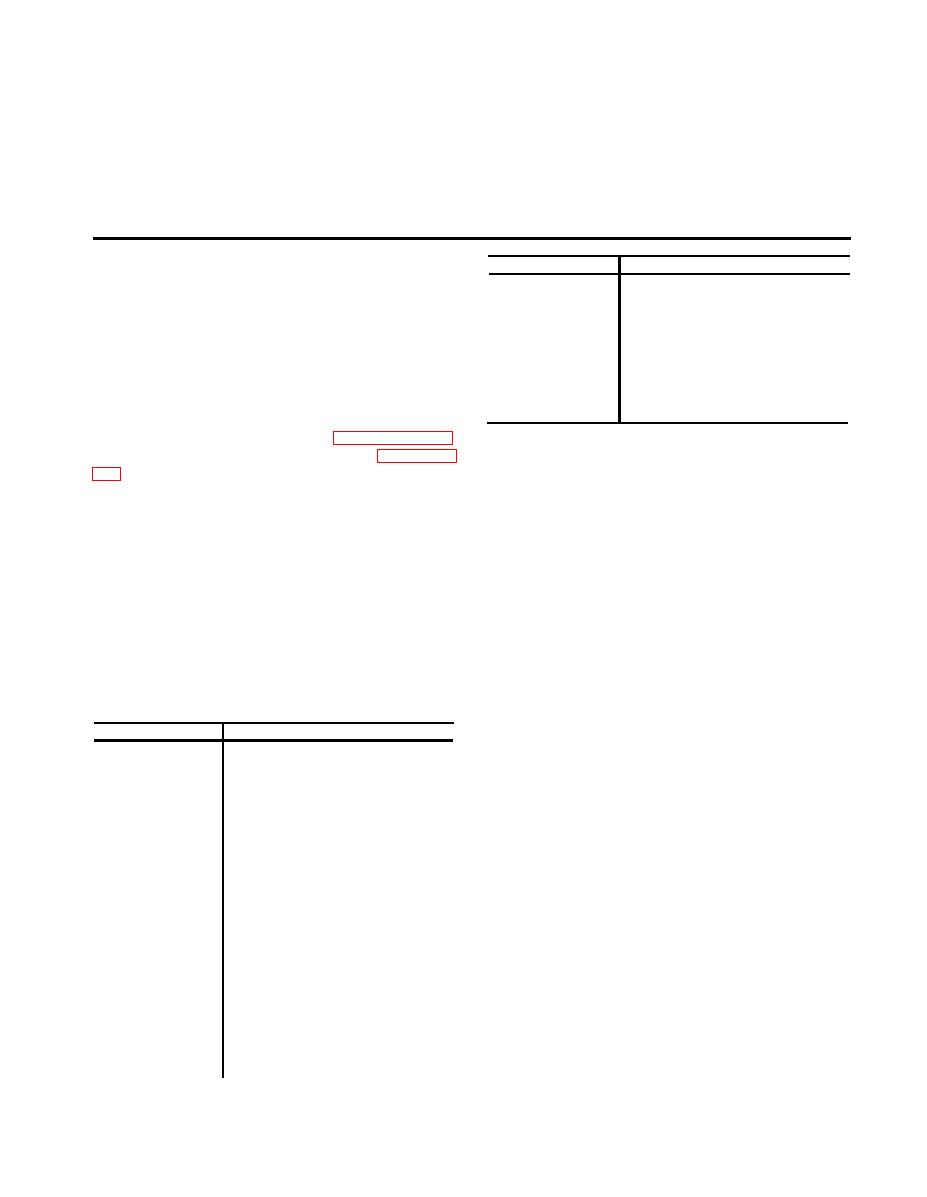
TM 11-6625-539-14-3
OPERATING INSTRUCTIONS
Function
Control or indicator
31. General
1co in microampere, and GM in
The test set is designed so that it is a safe in-
microohms as required to test
strument to use with semiconductor circuitry. The
semiconductor devices and BAT
voltage and current levels that the test set can
range to check condition of in-
supply to any device are controlled so that the
ternal batteries.
For use in conjunction with short
Transistor socket
accidental misplacing of leads will not damage
lead out-of-circuit transistors.
any semi-conductor; however, to achieve valid
Transistors may be plugged into
readings, proper operation and switch settings
socket directly.
are required. Controls and indicators, with the
function of each, are listed in paragraph 33.
Operating procedures are described in paragraph
a. General. Before operating the test set, check
the meter to see if the pointer falls on the meter
O. If it does not, turn the meter adjust screw,
either clockwise or counterclockwise, until the
Before operating the" test set, check the meter
pointer is exactly over the O mark on the left
to be sure that the pointer indicates exactly O.
side of the meter scale. The meter is shipped
If it does not, turn the adjusting screw on the
with the polarity switch set to OFF. When the
front of the meter until the pointer is zeroed.
polarity switch is set to OFF, all the tester bat-
The polarity switch should be set to OFF.
teries are disconnected from the circuitry and
a short circuit is placed across the meter. The
polarity switch should be set to OFF when the
The controls for the test set are on the front
instrument is not being used.
panel; their functions are described in the chart
CAUTION
below.
Never leave the polarity switch of the
instrument in one of the test positions
Control or indicator
Function
when the instrument is not being used.
Polarity switch
When rotated to any position other
A l w a y s return the polarity switch to
than OFF, selects proper voltage
OFF to prevent unnecessary drain of the
and current polarities for type
internal batteries.
of semiconductor device being
tested and for making reverse-to-
b. Beta Measurement (Out-of-Circuit).
forward ratio diode tests.
(1) If a transistor with short leads is being
Function switch
Selects desired function to be
measured, place the transistor in the small socket
tested.
CAL control
a. When beta is being measured,
on the lower right side of the f rent panel. The
sets collector current of trans-
transistor jacks on the front panel are spaced so
istor under test to 1 ma.
that they will accept a standard test adapter for
b. When field effect transistors
rapid testing of transistors with long leads.
are being measured, sets gate
(2) Place the polarity switch to correspond
to source voltage at 100 mv.
c. When forward ratio test is be-
to the type of semiconductor device being used.
ing made, sets diode current to
(3) Set the function switch to BETA CAL,
1 milliampere,
and adjust the CAL control for full-scale meter
Color-coded jacks
Used in conjunction with color-
deflection.
coded plug-in cables to make
(4) Place the function switch to the BETA
connection from test set to semi-
Xl range, and read the BETA directly on the
conductor under test.
Meter
Provides readings in beta, ohms,
top (BETA) scale of the meter. If the BETA is

